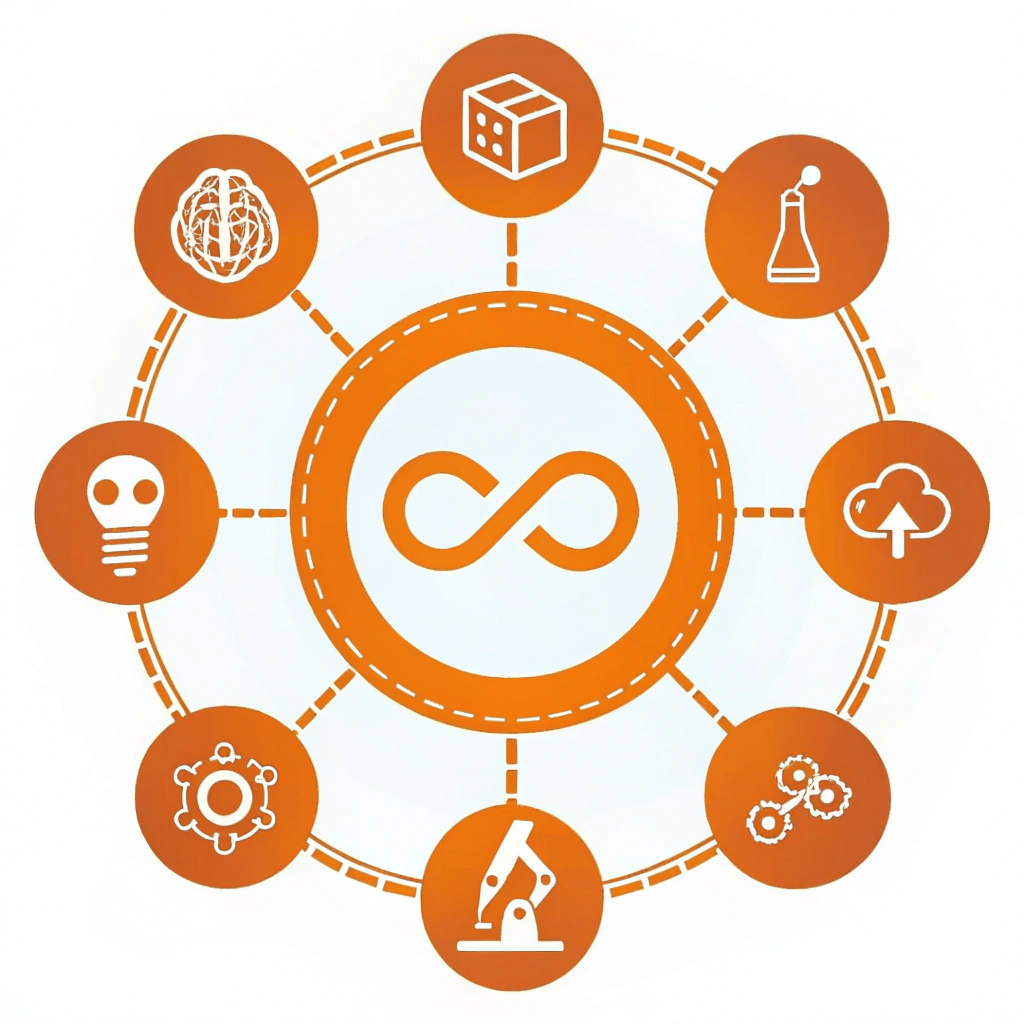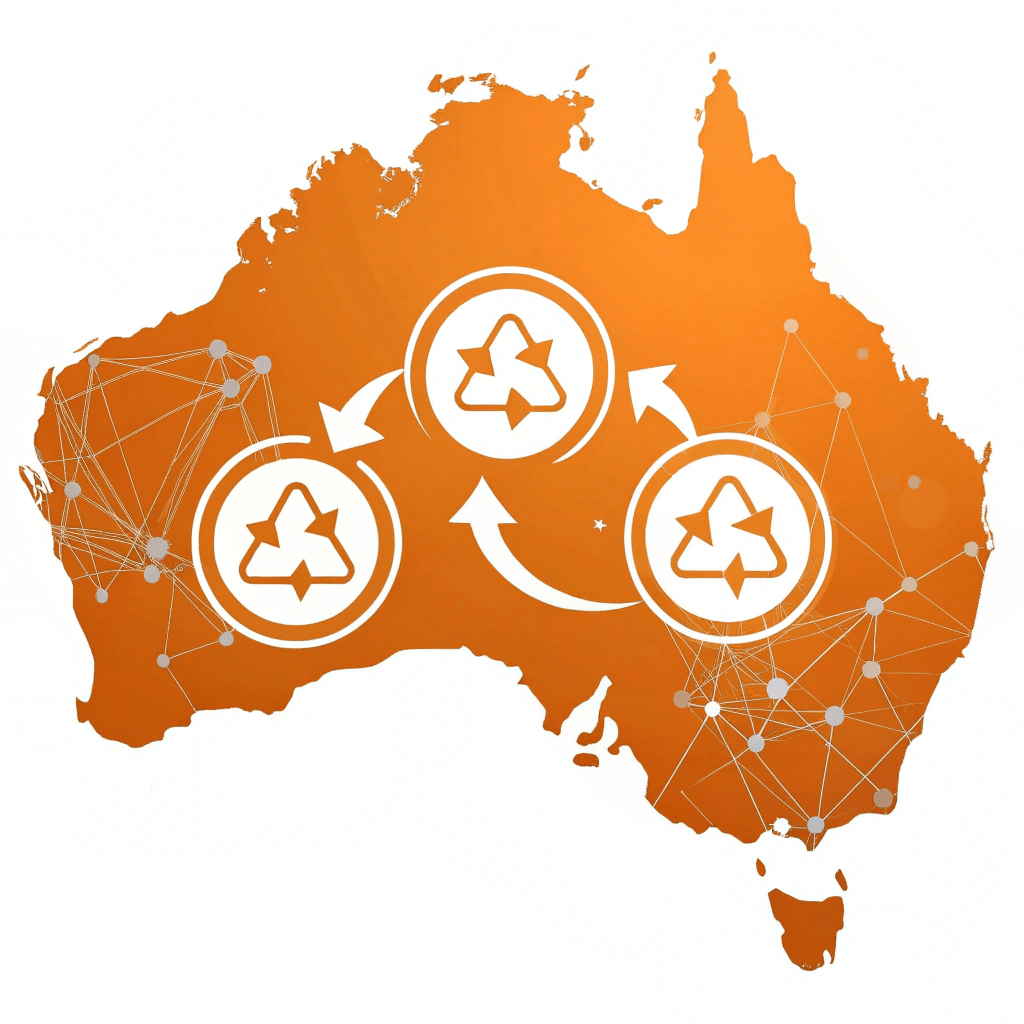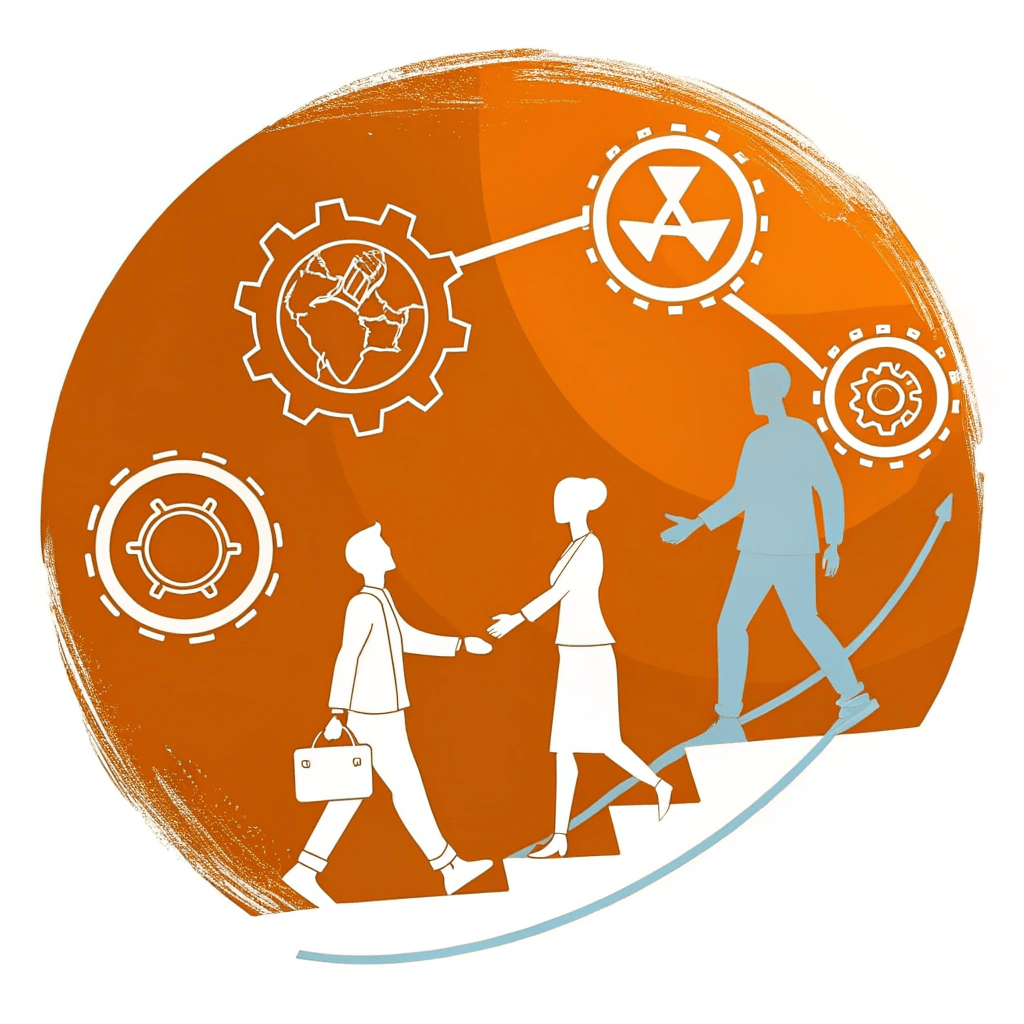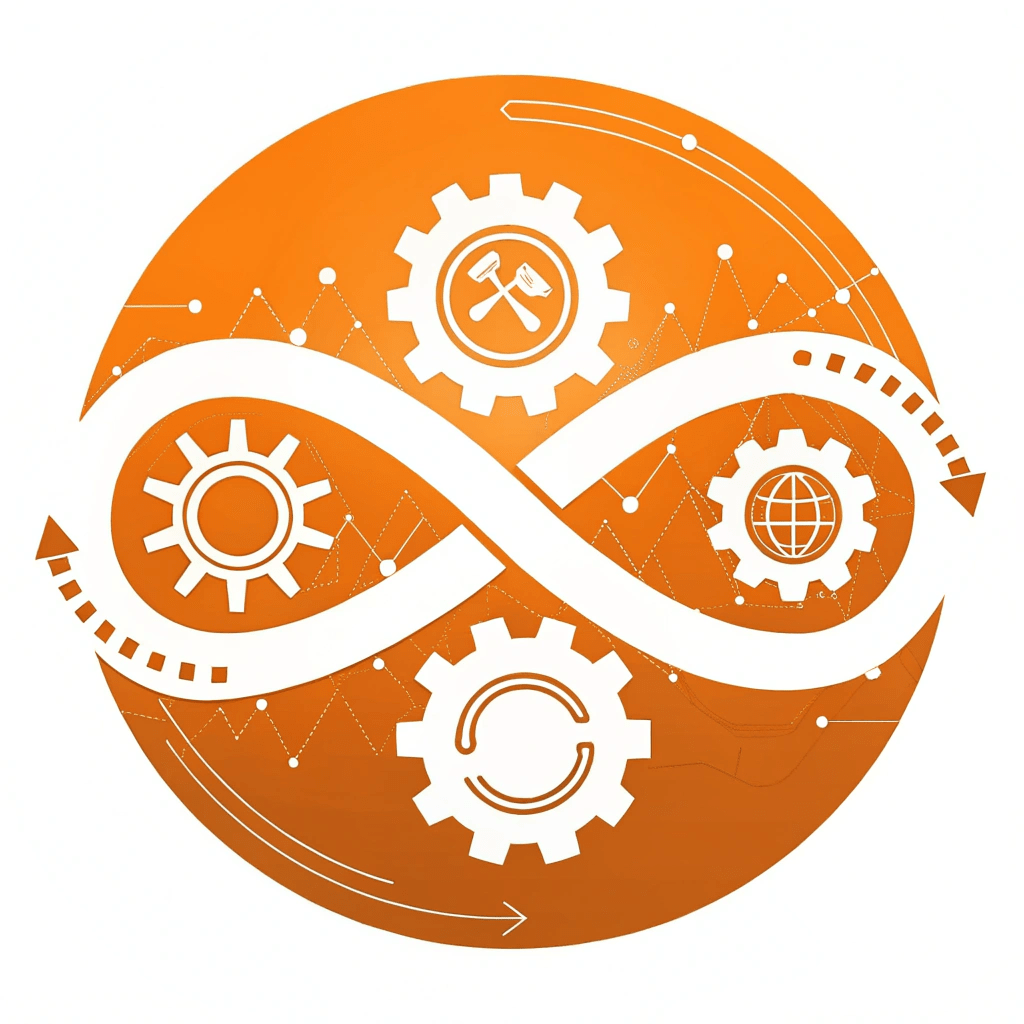The Role of Technology in the Circular Economy
Explore how technology transforms sustainability practices in Australian businesses.
Data Analytics & IoT
AI & Machine Learning
Blockchain Technology
Introduction to the Circular Economy
Understanding the Circular Economy Model
Our world has traditionally operated on a “take-make-dispose” linear economic model, consuming finite resources and generating increasing amounts of waste. However, a transformative shift is underway: the Circular Economy. This model aims to keep resources in use for as long as possible, extract the maximum value from them whilst in use, then recover and regenerate products and materials at the end of each service life. At the heart of accelerating this critical transition is technology, acting as both an enabler and an innovator.
For Australian businesses, embracing the circular economy isn’t just an environmental imperative; it’s a strategic opportunity for innovation, resilience, and new revenue streams. Technology provides the tools to unlock this potential, making circular practices scalable, efficient, and economically viable. The Ellen MacArthur Foundation provides a leading definition and framework for the circular economy.
What is the Circular Economy?
Defining the Circular Economy
The circular economy is a systemic approach to economic development designed to benefit businesses, society, and the environment. It’s built on three core principles: The Ellen MacArthur Foundation further elaborates on these principles.
- Eliminate Waste and Pollution: Design out waste and pollution from the outset.
- Circulate Products and Materials: Keep products and materials in use, through strategies like reuse, repair, refurbishment, remanufacturing, and recycling.
- Regenerate Nature: Foster natural systems, for example, by returning biological materials safely to the soil.
It stands in stark contrast to the traditional linear model, aiming to close loops and minimize resource extraction. The European Parliament explains the difference between linear and circular economies.
The Importance of the Circular Economy
Driving Sustainability and Business Innovation
The shift to a circular economy is crucial for several reasons:
- Environmental Preservation: Reduces raw material extraction, lowers greenhouse gas emissions, minimizes waste to landfill, and decreases pollution. The Australian Circular Economy Hub details environmental benefits.
- Resource Resilience: Decreases reliance on finite resources, making economies more resilient to supply chain shocks and resource price volatility.
- Economic Opportunity: Creates new business models, fosters innovation, generates new jobs, and can lead to significant cost savings through efficiency and resource recovery. Deloitte’s report on the economic benefits of a circular economy.
- Societal Benefits: Contributes to cleaner environments, healthier communities, and more sustainable consumption patterns.
How Technology Enables the Circular Economy
Harnessing Innovation for Sustainable Practices

Technology is not just a tool; it’s the central nervous system of a functioning circular economy. It provides the means to track, optimize, process, and connect. The World Economic Forum highlights technology as a key enabler for the circular economy.
Data Analytics & IoT in the Circular Economy
Role: IoT sensors collect real-time data on product usage, material flows, and waste generation. Data analytics processes this information to identify inefficiencies, optimize resource consumption, and enable predictive maintenance for products, extending their lifespan.
Application: Smart bins that signal when full, sensors tracking wear and tear on shared machinery, or optimizing utility consumption in buildings. This links closely to How Data Analytics Can Drive Resource Efficiency for Businesses. IBM provides examples of IoT in circular economy.
AI & Machine Learning
Role: AI algorithms can analyze vast datasets from IoT devices to predict demand for recycled materials, optimize complex recycling and sorting processes, identify different material types with high precision, and even design products for easier disassembly.
Application: Robotic sorting systems in recycling plants, AI-driven platforms matching waste producers with material reusers, or optimizing logistics for reverse supply chains. Our blog on Leveraging AI to Streamline Your Australian Startup’s Processes has touched on AI’s efficiency benefits. Accenture discusses AI’s role in the circular economy.
Blockchain Technology
Role: Provides a transparent, immutable, and verifiable ledger for tracking products and materials throughout their lifecycle, from origin to disposal and reuse. This enables “product passports.” PwC highlights blockchain’s role in circular supply chains.
Application: Verifying the source of recycled content, tracking ethical sourcing of materials, proving authenticity for refurbished goods, or facilitating circular supply chains where material ownership can be transferred. This is a practical extension of Real-World Examples of Web3 Applications for SMBs.
Digital Platforms & Marketplaces
Leveraging Digital Platforms for Circular Economy
Role: Connects users for sharing, repairing, renting, or selling pre-owned goods. Facilitates business-to-business (B2B) exchange of waste or by-products as raw materials for others.
Application: Online platforms for tool libraries, clothing rental services, marketplaces for industrial waste streams, or apps for sharing surplus food. The World Economic Forum also details how digital platforms drive circularity.
Advanced Manufacturing
The Role of Advanced Manufacturing in the Circular Economy
Role: Enables on-demand production, reducing overproduction and waste. Facilitates localized manufacturing and the use of recycled or bio-based materials for new products and spare parts.
Application: Printing replacement parts for appliances instead of buying new ones, creating customized products from recycled plastics, or rapid prototyping with minimal material waste. The European Commission discusses 3D printing for circular economy.
Robotics & Automation
Enhancing Efficiency with Robotics & Automation
Role: Increases the efficiency and safety of tasks like sorting, disassembly, and remanufacturing of complex products.
Application: Automated disassembly lines for electronics, robotic systems for precise material separation in recycling facilities. Forbes highlights how robotics contribute to sustainability.
Australian Context for Circular Economy
Challenges and Opportunities in Australia

Australia is increasingly recognizing the economic and environmental benefits of a circular economy. Both federal and state governments are developing strategies and investing in initiatives to transition away from a linear model. The Australian Government’s Circular Economy Strategy is a key policy document.
This creates significant opportunities for Australian businesses to innovate in product design, material recovery, and service models. Our previous discussion on Using Technology for Community-Based Waste Reduction Initiatives aligns with this national focus. The Australian Circular Economy Hub provides resources and case studies relevant to Australia.
Challenges & Opportunities:
While the transition presents challenges like initial investment and changing consumer behaviour, the opportunities are immense: new jobs in design, remanufacturing, and logistics; enhanced brand reputation; reduced operational costs; and increased resilience against global resource shocks. The CSIRO highlights the potential for new jobs in a circular economy.
Discover How Tr1f3cta Can Transform Your Business

Transitioning to circular practices requires robust technological solutions and strategic planning. Tr1f3cta is uniquely positioned to assist Australian businesses in leveraging technology for the circular economy.
- Data Analytics Solutions: We can help you implement IoT and data analytics systems to track resource flows, optimize processes, and gain insights into your sustainability performance.
- Web & App Developing: Our expertise in custom web and app development can create digital platforms, marketplaces, or internal systems to enable sharing, reuse, and efficient resource management for your circular initiatives.
- Technology Consulting: We provide strategic guidance on integrating emerging technologies like AI and blockchain into your operations to support circular economy principles, from supply chain transparency to waste management.
Conclusion
The Role of Technology in Advancing the Circular Economy
Technology is the indispensable engine driving the transition to a circular economy. From advanced data analytics and AI-powered sorting to transparent blockchain traceability and innovative digital platforms, technological advancements are making it possible for businesses to eliminate waste, circulate resources, and regenerate nature. For Australian businesses, embracing these technological solutions is not just about environmental responsibility; it’s about building a more resilient, innovative, and profitable future.
Contact Us for a Personalized Consultation
#CircularEconomy, #SustainableTech, #WasteReduction, #ResourceEfficiency, #GreenBusiness, #AustralianBusiness, #IoT, #DataAnalytics, #AI, #Blockchain, #DigitalPlatforms, #Sustainability, #CircularEconomyAU, #TechforGood, #Tf3comau, #EcoFriendly, #Innovation, #SustainableDevelopment


